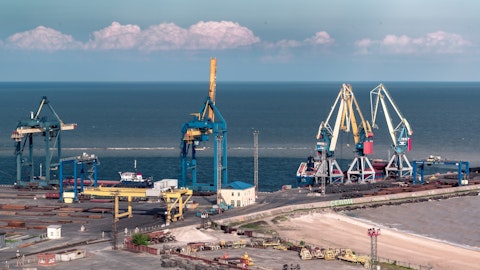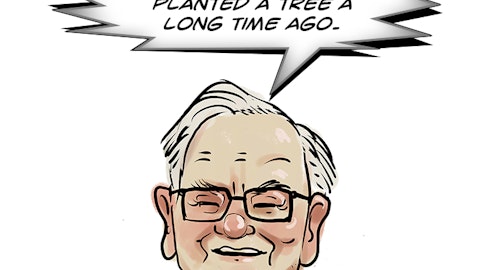Richard Jackson: Yes, I’ll just maybe give you some perspective on how we’re thinking about our inventory in general in terms of how that’s going, and I can address some of the bone springs. So, the last couple of years, we’ve been able to more than replace the wells drilled with improvements in inventory, which come in two buckets. One is appraisal activity, which I’ll give you a little color on in terms of bone spring to your question, but also production improvement and cost reduction. So, both of those things not only add inventory, but they move it, we call it to the left, but gets us to less than 60, less than 50, and then ultimately what we’re going for, less than $40 break-even inventory. And so, as we think about this year in the unconventional, we had a target of around adding 450 wells in the unconventional less than $50 break-even.
A bulk of that will come from, we highlighted one of the highlights we had was this third Bone Spring target that we had on the slide highlighting the four wells with the greater than 780 MBOE or MBO. Those will add a bulk of our improvement this year in terms of that promotion of inventory. And so when I look at even the first quarter, just to give you some color, so we’re aiming for this $450 million in the first quarter. We had 90 adds less than $50 breakeven. That came, about half of that, from the Bone Spring wells that I mentioned but we’re also getting things out of New Mexico and some of the shallower Bone Spring there. And so it’s not only what we’re drilling today, which is going up in terms of secondary benches as a percentage of our total drilled wells in the year, but it’s really adding that low-cost inventory in the future.
And so a lot of times, we’ll get the so what of this inventory, and that’s really it. It’s being able to extend this low-cost capital intensity as we prosecute our plan over the next few years.
Scott Gruber: Got it. And then how do you think about potentially co-developing some of the Bone Springs, along with the core Wolfcamp? Or you’re mainly looking at coming back and hitting those zones, leveraging the installed infrastructure as you mentioned?
Richard Jackson: Yes. I think — I mean that’s a big part of, I’d say, the next few years is really optimizing how we put that together. Obviously, in the Midland, we do a lot more what we call co-development where you’re doing these zones at the same time. One of the benefits in the Delaware is being able to sequence them, have a little bit more precision because of the frac barriers. So we don’t have to think about more of the cube or co-development opportunities, which gives us a great opportunity to really maximize the savings we get from reusing these facilities, like I described. So last year, I think we were around 20% secondary benches in the Delaware. This year, we’re north of 30%. So you can see that sort of opportunity becoming more prominent in terms of our development plans.
Operator: The next question comes from Nitin Kumar with Mizuho. Please go ahead.
Nitin Kumar: Hi, good afternoon. And thanks for taking my question. I just want to start on CrownRock quickly. You mentioned that you’re still on track to close the deal in the third quarter. When we announced the deal, you had talked about 170,000 BOE per day of production from CrownRock. Just wanted to see if you could revisit that and see how things are trending there as you are getting closer to the close?
Vicki Hollub: We don’t really have any update on the — either the production or any of the other metrics from CrownRock just what we’ve provided previously. We’ll probably provide, we’ll definitely provide an update when we have our next quarterly meeting. Because by that time, I believe, we will have closed, maybe not, but it’s going to be certainly sometime in the third quarter.
Nitin Kumar: Great. And just — there’s been some movement in Colorado around SB24, which requires a production fee on producers. Want to see what that would look like for Oxy? You’re a big producer in the state, and sort of what your thoughts are around that initiative?
Vicki Hollub: Yes. I think that the agreement that was reached in Colorado was a win-win for both the people of Colorado and the investments, the investors in Colorado. So we feel that paying the fee and along with paying the fee to have taken away some bills and some potential ballot measures that would have severely restricted what the oil and gas industry could do that when you take that together, all together, it provides a scenario for the governor and the government of Colorado to do something positive with the fees that will be collected. So we view this to be not overly burdensome for our operations. We think it’s actually going to be a doable scenario for us as we work toward doing some of the other things that will come along with this, which is working more on doing things that impact and help to reduce the impact on the ozone layer as well as doing some things that will help from an environmental justice standpoint.
So it’s a full package deal. It’s not just a fee. And putting all that together, it’s a good deal.
Operator: The next question comes from David Deckelbaum with TD Cowen. Please go ahead.
David Deckelbaum: Thanks Vicki and team. Thanks for taking my questions. I wanted to ask for a little bit more color just on the guide just so I’m clear on how numbers are progressing this year. The impact from the Gulf of Mexico, is that exclusively what’s contributing to the 100-basis-point reduction in oil cut this year? Are you seeing some contribution from some gassier zones and some other of your core assets or perhaps the impact of the PSE in areas like Algeria?
Vicki Hollub: No, it was almost entirely due to the Gulf of Mexico shutdown. There’s really nothing else trending differently that we have in our portfolio.





